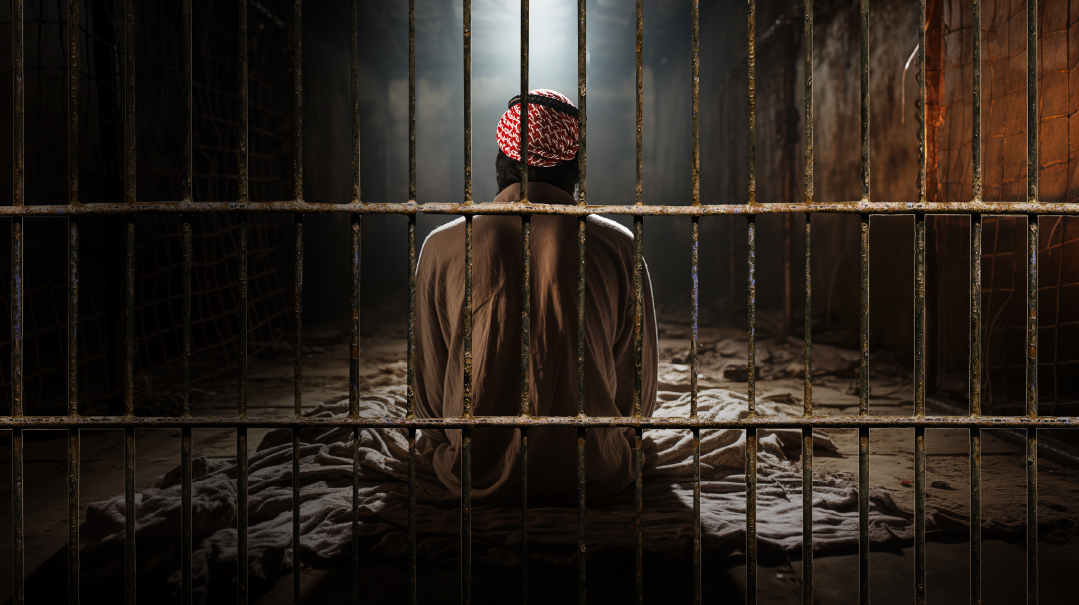Saved to Slaughter
| November 14, 2023The former jailer of Hamas's masterminds unveils a portrait of evil

Saved twice by Israel — the first time with expert medical treatment against a fast-growing brain tumor, and the next time as one of the thousand top-tiered terrorists swapped for Gilad Shalit — Yahya Sinwar went on to head Hamas and mastermind the October 7 massacre. Now he’s hiding in a bunker somewhere under Gaza while his fighters face the IDF, and his former Israeli prison handler isn’t surprised — he always led by letting others do the dirty work
February 2008.
Outside Assaf Harofeh Medical Center in the Tel Aviv suburb of Beer Yaakov, two armed guards are escorting a handcuffed prisoner into the building. One of the highest profile security prisoners in the country, the man whose tough countenance is generally a study in cruelty now looks frightened and miserable. If you’d see him, you might even feel sorry for him — he has a fast-growing brain tumor and is about to undergo complex, life-saving surgery.
His name is Yahya Sinwar. The State of Israel is sponsoring his surgery. And he will eventually become the leader of Hamas in the Gaza Strip, and mastermind behind the unfathomably barbaric October 7 massacre on Israel’s southern communities.
“AT
some point, Yahya Sinwar, one of the most notorious security prisoners under my purview, began complaining about intense headaches,” recalls Lieutenant (retired) Betty Lahat, former prisons director and head of the Israel Prison Service’s Intelligence Department, a position that put her in charge of top security prisoners, among them Sinwar and other arch-terrorists such as Salah Shehade, Saleh al-Arouri, and Marwan Barghouti, to name a few. “For all of his usual bluster and terror cheerleading, he was absolutely terrified about his own health. It got so bad that we had him transferred to a facility with better medical care, where they discovered that he had an aggressive brain tumor.”
Sinwar’s tumor was found 15 years ago, but Lahat, 68, who retired from the Prisons Services in 2010 and today lives in the Samarian town of Alfei Menashe, still remembers every detail of Israel’s battle to save the arch-murderer’s life. “When they told him the news, he completely broke down. He feared that it was over,” she tells Mishpacha. “And he was right to be scared. His cancer was aggressive and close to his brainstem.”
In one of the infuriatingly bitter ironies that mark the struggle between the State of Israel — a liberal democracy that adheres to the Western principles guiding warfare and imprisonment — and the savage terrorists that seek its end, the Israeli government treated Sinwar’s tumor with taxpayer-funded neurosurgery at Assaf Harofeh Medical Center.
No matter that he was serving four life sentences after being convicted in 1989 for leading the abduction and murder of two Israeli soldiers, as well as the murder of four Palestinians he suspected of collaboration. The enlightened State of Israel couldn’t let him die of medical neglect.
“After the surgery, I went to see him in the hospital,” says Lahat. “At first he tried to keep up a tough exterior, but he quickly broke down and started sobbing like a baby. ‘Please, am I going to survive? No one will tell me what my condition is, even my family doesn’t know if this is the end for me.’
“I called over one of the medical team, who confirmed to Sinwar that the surgery had been a success. I told him, ‘You see, in the end, the State of Israel that you so despise saved your life.’ Of course, there was no gratitude. He just answered, ‘Well, that’s your responsibility. Of course you saved me.’
“Actually,” she continues, “Sinwar remained worried for some time afterward. Whenever he saw me, he would ask anxiously, ‘What will happen to me? Won’t the tumor grow back?’ During his recovery he was transferred to a prison service hospital, where he was allowed visitors. One of those visitors was Sufian Abu Zaida, the Palestinian Authority’s minister for prisoner affairs. After the visit I asked Abu Zaida, ‘So, did the big hero cry to you too?’ He said, ‘Yeah, what do you want? Sinwar’s afraid for his life.’ ”
Oops! We could not locate your form.







